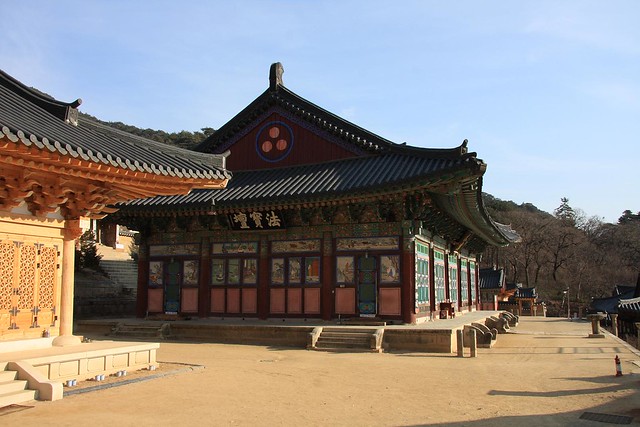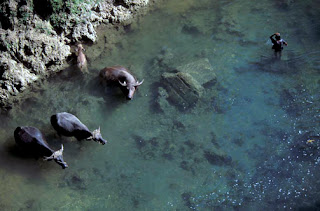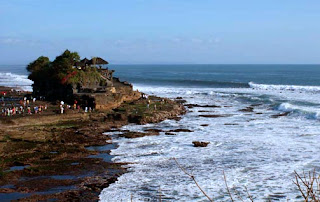 Taman Mini Indonesia Indah or Beautiful Indonesia Miniature Park was built to be the showcase of Indonesia, in this park visitors will find many Indonesia natural & cultural richness such as unique replication of traditional houses (pavilion) from all around Indonesia, an Indonesia archipelago shaped lake and many other fascinating attraction. The park is an Ideal spot for week-end family outing and also international tourist who did not have enough time to explore Indonesia.
Taman Mini Indonesia Indah or Beautiful Indonesia Miniature Park was built to be the showcase of Indonesia, in this park visitors will find many Indonesia natural & cultural richness such as unique replication of traditional houses (pavilion) from all around Indonesia, an Indonesia archipelago shaped lake and many other fascinating attraction. The park is an Ideal spot for week-end family outing and also international tourist who did not have enough time to explore Indonesia.It started with the idea of the late Ibu Tien Soeharto (former Indonesia first lady). The construction of TMII began in 1971 and it was official inaugurated on April 20, 1975.
Since its existence and in the course of time TMII continues to grow and developed in line with the dynamism of the community life of Indonesia. People are the more aware of the great advantages of the existence of TMII, with the mission to be a vehicle for the preservation and development of the culture and a means to strengthen the unity and integrity of the people of Indonesia.
TMII is considered as a vehicle presenting the diversity of the people of Indonesia and the variety of cultural wealth enables the community to gain interesting experience, knowledge and information regarding various aspect of culture, tradition, customs, forms of art as far as the introduction of cultural objects.
The beauty and cultural wealth presented by TMII can easily be observed by the community through the availability of a more complete and interactive means of information. It is expected that through the website the information can be disseminated widely all over the Archipelago and even abroad so that it will facilitate the community to better know about the culture and customs of the people of Indonesia.
Getting There
From Central Jakarta, TMII is about 25 kilometers away. Five kilometers, if you're in Halim Perdana Kusuma airport (local airport). It is reachable by public transportation, taxi. Rent a car for a more comfortable journey. Below is the list of public transportation heading TMII. But you may need to have a local companion to make sure you get on the right car or bus.
* Metro Mini T. 45 (Pulogadung - PT. II TMII)

* Angkot KWK S. 15 A (Ragunan - PT. II TMII)
* Angkot KWK T. 01 (Cililitan - Bambu Apus)
* Angkot KWK T. 02 (Cililitan - Cipayung)
* Angkot KWK T. 05 (Cililitan - Setu)
* Angkot KWK P. 15 (Cililitan - Cilangkap)
* Angkot KWK K. 40 (Bekasi-Kmp. Rambutan)
* Angkot KWK S. 19 (Depok - Pinang Ranti)
* Bus Gandeng PPD BT. 03 (Grogol - TMII)
Getting Around
This is a mean of transportation to get you around the "Archipelago" by shuttle cars. Sky Lift Indonesia (Kereta Gantung). Want a quick and easy geography lesson? Take the Sky Lift for an aerial tour of the park and one of the sights that will stay with you is a scale model of the islands of Indonesian archipelago set in a smalll lake.
To Do
Istana Anak-anak Indonesia:
Indonesia Children Castle, featuring fairy tales painting from Indonesia and all over the world.
Perahu Angsa Arsipel Indonesia:
Swan Boat to explore Indonesia archipelago shaped lake.
Taman Among Putro:
An amusement park for children fully equipped with games and fun activities.
Taman Ria Atmaja:
a 60 Sq m stage in an 4000 Sq m area, well known as Dangdut Terminal (Dangdut: popular unique music genre in Indonesia).
Taman Renang Ambar Tirta:
Swimming pool for adult and children, equipped with trainer and lifeguard.
Teater Imax Keong Emas:
A shopisticated IMAX technology snail shaped theatre, with several IMAX movies featuring Indonesia natural and cultural richness.
Desa Wisata:
When a day is not enough to explore TMII, there is Desa Wisata, a hostel for individual or groups visiting TMII from outside Jakarta to stay overnight.
Titihan Samirono/Aeromovel:
Another way to get around is the fast train, Aeromovel. This is an example of the fast and efficient train that could provide nowaday mass transportation for Indonesia.
To Stay
Inns and hotels in and around Jakarta
Graha Wisata Remaja. Ideal for teenagers and those with limited budget. It is within walking distance to small restaurants, cable car station, pool, and several museums. Have overtired legs? The terminal for transportation is nearby. The shuttle cars there will transport you to other attraction within the park that you desire.
Padepokan Pencak Silat. This accomodation equipped with meeting rooms.
Desa Wisata. Mainly for young people in groups. This place sometimes hosts several meetings, events, and seminars. You can rent the cottages for more privacy. Food and beverages is available to order. An open theater is also available.
To Eat
Restoran Caping Gunung
Its natural lighting (no light bulbs, light is provided with roof made of clear materials) and tasty food will provide a unique dining experience.
Pasar Tiban (Tiban Market)
Food sellers inhabit this small complex consisting of many buildings. You can eat at small restaurants scattered around this area.
To Buy
TMII sells many small trinkets that will enable you to remember your experience here. Various shirts, hats, postcards are widely available.
Tips
TMII is quite huge, consisting of more than 100 hectares of land. If you don't have much time, join a tour. That way, you'll save money and time. (You'll get a discount if you travel in a group). If you want to explore this site fully, it is best if you spend the night within this area.
Should be on your list:
1. Take a trip on the cable car.
You'll be able to see TMII from the top a delightful experience.
2. Watch Indonesian movies at Theater Imax Keong Emas.
3. Visit several museums in this area.
4. Visit the orchid garden and bird park.





 If you like to observe wild animals like tigers, lions and crocodiles in their native habitat, then Taman Safari Indonesia is just for you.
If you like to observe wild animals like tigers, lions and crocodiles in their native habitat, then Taman Safari Indonesia is just for you.  Taman Safari has a collection of animals from nearly all over the world and local animals such as komodos, rhinoceros, bisons, sun bears, white tigers, elephants, anoa, etc. There are more than 2,500 animals in Taman Safari Bogor with hundreds of species currently being maintained.
Taman Safari has a collection of animals from nearly all over the world and local animals such as komodos, rhinoceros, bisons, sun bears, white tigers, elephants, anoa, etc. There are more than 2,500 animals in Taman Safari Bogor with hundreds of species currently being maintained. After watching animals in their habitats, you can take your children to enjoy various animal attractions performed by orangutangs, dogs and even goats. These attractions take about half an hour. You could also visit the bird park, animal education show, reptiles, baby zoo, elephant and horse riding, safari trek, and wild-wild west exhibits.
After watching animals in their habitats, you can take your children to enjoy various animal attractions performed by orangutangs, dogs and even goats. These attractions take about half an hour. You could also visit the bird park, animal education show, reptiles, baby zoo, elephant and horse riding, safari trek, and wild-wild west exhibits.
























